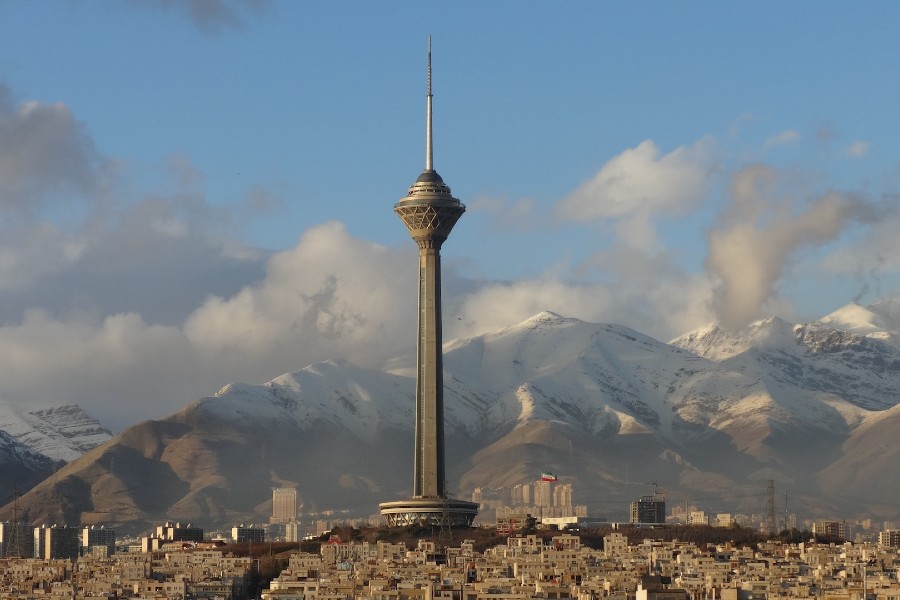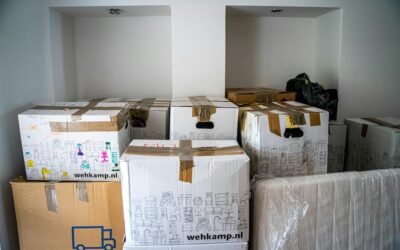What does Iran’s experience tell us?
At the author’s request, the name is not published
Photo: According to Iranian researchers, universities have turned into “article publication factories,” rarely tackling applied problems. Photo by hassan hedayatzadeh on Unsplash
In 2022, Iran was among the countries that Russia studied closely, both from a scientific and from a political perspective. The reasoning is clear: for more than 40 years, Iran has been under sanctions. Such extensive experience may offer clues as to how science functions under conditions of external restrictions—and how it changes under sanctions.
Scale of Sanctions
The first sanctions against Iran were introduced in 1979. They were imposed by the US. The UN and the European Union followed suit. Then came the united sanctions of Australia, Canada, South Korea, and Japan. Switzerland also imposed its own.
Over the following decades, there were periods of relatively prosperous development, among which 2016-2017, when the sanctions were partially lifted, stands out. Rapid growth began immediately, including in the sciences.
This growth was cut short in 2018 when the US withdrew from the Iran nuclear deal. After this, the United States began to impose the harshest sanctions, while the rest of the deal-participating countries were more tolerant of Iran.
Typology of Sanctions
All sanctions impacting the sciences in Iran can be classified into two broad groups.
First type: sanctions specifically targeting the scientific sphere and aimed at increasing its isolation. These include restrictions on the publication of articles by Iranian researchers, limitations on their participation in scientific conferences, and prohibitions on the use of specialized scientific software, as well as sanctions against individual universities.
Second type: economic sanctions that also happen to have an effect on the sciences. For example, some transactions related to payment for imports—including for high-tech scientific equipment—have been sanctioned.
Among economic sanctions, the ones that have hit the sciences the hardest have been:
- the U.S. ban on the supply of high-tech equipment (including scientific equipment) to Iran
- the embargo on exports from EU countries of materials, equipment, and technologies that could be used to develop nuclear weapons and weapon delivery systems
- the disconnection of the country’s leading banks from SWIFT
Iran’s Science Policy
It seems that the obvious response of the Iranian government should have been to enact measures facilitating the work of scientists, helping science to survive in the face of sanctions. However, finding a way to overcome these sanctions proved difficult, even though it is quite possible to pursue a scientific policy based on global goals, taking into account the trend of evaluating science using bibliometric indicators.
2005. The basic principles of Iran’s science policy, which have been refined and amended with more details over time, were formulated in 2005 within the framework of “Vision 2025,” a 20-year plan. A number of ambitious goals have been set, including:
- increasing spending on science to 4% of GDP (despite the fact that only two countries—Israel and South Korea—have reached expenditures of this level)
- a large increase in research funding from the business sphere.
They planned to increase spending on research and development by 0.5% of GDP every year, reaching 3% by 2015. They also set the goal of getting five Iranian universities into the top 10% on global rankings by 2025. Taking into account the number of universities participating in rankings such as THE or QS, the top 10% corresponds to the first 130 spots.
2015. In this year, the National Science and Technology Policy was adopted. The emphasis shifted to equating the success of the sciences with the number of works published. According to a statement made by the Supreme Leader of Iran, the gap between Iran and Western countries in terms of their number of publications was precisely the one scientists needed to bridge.
Quantity over Quality
As a matter of fact, they have been able to successfully increase the number of publications, but to the detriment of practical returns from the sciences.
The ties between universities and industry have remained weak, as evidenced, among other things, by low levels of business sector funding (30% of the country’s total R&D spending) and modest patenting rates. According to Iranian researchers, the country’s universities have turned into “article publication factories,” rarely tackling applied problems.
The Diaspora as a Driver of Iranian Science
Iran’s publishing success has largely been tied to its scientific diaspora. The number of emigrants has steadily grown to enormous proportions. Thus, the total number of scientists of Iranian origin working abroad today is more than 110,000, which is comparable to the number of scientists working in Iran (119,000). And the Iranian diaspora continues to grow due to a regular influx of graduate students studying in foreign universities.
According to data from the National Science Foundation in the US, in 2020 Iran took fourth place behind China, India, and South Korea for the number of graduate students studying in the US. For comparison, Russia is number 24 on this list. Moreover, the vast majority of graduate students from Iran (92.5%) plan to stay in the United States one way or another after completing their graduate studies.
Thanks to the diaspora, a “window” to the Western sciences has been left open: those scientists who have left help those who remain behind. The main body of the scientific diaspora is concentrated in the United States, so this country has become Iran’s main scientific partner.
Less Money, Fewer Results
At the same time, funding for the sciences in Iran has remained critically low. From 2012 to 2020, spending on research and development fluctuated between 0.79% and 0.83% of GDP—significantly lower than the target set for 2015 (3% of GDP).
With the primary focus on publishing activity and the weakness of other development factors, Iranian universities have not been able to make significant progress in global rankings. To date, there are 10 Iranian universities in the 2023 THE top 500, and only 2 universities in the 2023 QS World University Rankings top 500.
Overcoming Sanctions
In fact, the task of overcoming sanctions restrictions has been transferred to the level of universities and research institutes.
Access to scientific databases. One exception is information management and supply in research. First of all, Iranian access to the leading international databases of scientific literature, Web of Science and Scopus, has not been blocked, although only state universities have subscriptions to scientific literature. Second, bibliographic databases of national scientific publications (e.g., the Scientific Information Database, SID) have been created in Iran, even if these are much more modest in scope than international databases of scientific periodicals.
Participation in conferences. Circumventing restrictions on participation in international conferences held in countries that have imposed sanctions on Iran has proven much more difficult. But individual universities and scientists have found ways around these: they generally use cards issued in third-party countries to pay for conference tickets, or else payment is made through colleagues from the Iranian scientific diaspora.
Meanwhile, the participation of foreign—primarily American—scientists in scientific events in Iran, even virtual ones, is strictly limited and monitored by OFAC.
Material resources. The most difficult thing has been maintaining an up-to-date material base for the sciences—namely, software and scientific equipment.
Iran is subject to sanctions that prohibit the sale of software to the country. Researchers rely heavily on proxies (HTTP proxies, DNS proxies) to circumvent these sanctions, and the government does essentially nothing to stop piracy.
As a result of this palliative decision, Iran has become the world leader in percentage of pirated programs installed (85% of software installed). Second place is held by China (66%) and third by Russia (62%).
For its part, high-tech scientific equipment falls under the export control of the US and EU countries as “dual-use goods,” which are also subject to UN sanctions. In the US, OFAC prohibits U.S. individuals and entities, wherever they are located, from selling or supplying any technology or service from the US to Iran.
The obvious consequence is that it is difficult for Iranian universities and scientific organizations to buy mid- and high-tech equipment in the US, the EU, and Japan, which are among the main producers of scientific equipment. Purchasing basic laboratory equipment from China has provided a partial solution, but it falls short of equipping scientific laboratories with modern instruments.
Such equipment can only be imported using semi-legal means. Cases of illegal export of controlled laboratory equipment to Iran—including from the United States, Canada, and Germany—periodically arise.
Despite its efforts to create a material base for science, Iran is lagging far behind developed countries. This reduces its ability to conduct modern scientific research.
Conclusions
Iran’s experience shows that it is possible to develop “pure” science, measured by the number and quality of publications, under sanctions, albeit on a limited scale.
- On the one hand, it is extremely difficult to conduct advanced fundamental research without modern scientific equipment.
- On the other hand, Iran has access to the scientific diaspora, which aids the progress of science, although it stimulates a constant brain drain abroad. With limited domestic resources, the decision to keep this network running helps Iran gain modern scientific knowledge and research methods.
Due to limited access to international technological expertise, it has been made much more complicated to develop applied sciences. It is extremely difficult to form spheres of technological competency in the face of sanctions. Moreover, encouraging the country’s business sector to finance research and development in a closed market with weak competition has proved to be a daunting task.
* * *
The complexity of Russia’s situation lies in the fact that it faces a much larger number of sanctions and “unfriendly” countries than Iran. Finding solutions in these circumstances is therefore much more difficult.
However, even in difficult conditions, it is important to “keep the door open,” including through personal connections and participation in projects with the CIS countries, where many researchers have recently emigrated.
Another way to maintain openness is by developing scientific publishing houses at universities and research institutes, translating the best articles into English, and providing open access to published materials and research data. This will make information about the work of Russian researchers more accessible to anyone who may be interested in cooperation.





0 Comments